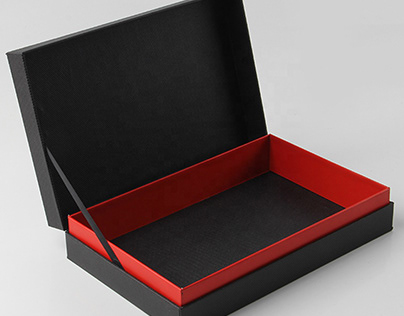Shoulder rigid boxes are a popular choice for premium packaging due to their strength, durability, and sophisticated appearance. These boxes are often used to package high-end products such as electronics, cosmetics, and luxury items. Choosing the right materials for shoulder rigid boxes is crucial for ensuring the boxes are both functional and visually appealing. This guide will help you understand the key factors to consider when selecting materials for shoulder rigid boxes, ensuring your packaging meets your needs and enhances your product’s presentation.
Understanding Shoulder Rigid Boxes
Before diving into material selection, it’s important to understand what shoulder rigid boxes are and why they are a preferred choice in the packaging industry.
1. What Are Shoulder Rigid Boxes?
Shoulder rigid boxes are a type of packaging with a unique design that includes a shoulder feature—an extended lip around the top of the box. This design provides a snug fit and helps secure the lid in place. The rigid structure of these boxes makes them ideal for high-value products that require extra protection and a premium presentation.
2. Advantages of Shoulder Rigid Boxes
Shoulder rigid boxes offer several benefits, including:
- Strength and Durability: Made from sturdy materials, these boxes provide excellent protection for the contents, reducing the risk of damage during shipping and handling.
- High-End Appearance: The solid structure and clean lines of shoulder rigid boxes give them a sophisticated look, making them suitable for luxury and high-value items.
- Customizable Design: Shoulder rigid boxes can be customized in various sizes, shapes, and finishes, allowing for a wide range of design options to match your brand’s identity.
Key Factors in Choosing Materials for Shoulder Rigid Boxes
When selecting materials for your shoulder rigid boxes, several factors need to be considered to ensure the packaging meets your requirements. Here’s a breakdown of the essential aspects to consider:
1. Material Strength and Durability
The primary purpose of shoulder rigid boxes is to provide robust protection for the contents. Therefore, the strength and durability of the material are crucial.
- Paperboard: This is a common choice for rigid packaging due to its strength and versatility. Paperboard is available in various thicknesses, and the right choice will depend on the weight and fragility of your product. For heavier items, thicker paperboard or chipboard is recommended.
- Chipboard: Made from recycled paper products, chipboard is another option for rigid packaging. It’s known for its durability and environmental benefits. It’s a good choice for products that require a solid structure but is also budget-friendly.
- Corrugated Paper: Although less common for shoulder rigid boxes, corrugated paper provides additional cushioning and protection. It’s typically used for larger or heavier items that need extra support during shipping.
2. Surface Finish and Texture
The surface finish and texture of your shoulder packaging boxes play a significant role in the overall appearance and feel of the product.
- Glossy Finish: A glossy finish provides a shiny, reflective surface that can make colors appear more vibrant. This finish is often used for products that require a high-impact look and feel.
- Matte Finish: A matte finish offers a non-reflective surface with a more subdued look. It’s ideal for products where a more understated or sophisticated appearance is desired.
- Textured Paper: Textured papers, such as linen or leatherette, add a tactile element to the packaging. These textures can enhance the sensory experience and make the packaging feel more premium.
3. Environmental Considerations
Sustainability is an important consideration in today’s packaging industry. Choosing eco-friendly materials can enhance your brand’s reputation and appeal to environmentally conscious consumers.
- Recycled Paperboard: Using paperboard made from recycled materials reduces environmental impact and supports sustainability efforts. This choice is becoming increasingly popular among brands committed to eco-friendly practices.
- Biodegradable Options: Some materials are biodegradable, meaning they break down more quickly and have less impact on the environment. These options are worth considering if sustainability is a key focus for your brand.
- Recycling Compatibility: Ensure that the materials you choose are recyclable and can be easily processed by recycling facilities. This helps reduce waste and promotes a circular economy.
4. Design and Printing Capabilities
The materials you choose for shoulder rigid boxes will impact the design and printing options available.
- Printing Quality: Different materials handle printing differently. Paperboard and chipboard generally provide a smooth surface for high-quality printing, which is essential for detailed graphics and text.
- Custom Prints and Finishes: If you plan to use custom prints, such as logos or artwork, ensure the material can support these designs. Some finishes, like foil stamping or embossing, may require specific types of paper or board to achieve the desired effect.
5. Cost Considerations
Cost is always a factor when selecting packaging materials. While it’s important to invest in quality materials, you should also consider your budget and how it aligns with your packaging needs.
- Material Costs: Different materials come with varying price points. Paperboard and chipboard are generally more affordable compared to specialty materials or finishes. Consider the balance between quality and cost when making your selection.
- Bulk Orders: Ordering materials in bulk can often reduce the per-unit cost. If you anticipate large quantities of shoulder rigid boxes, this can be a cost-effective strategy.
6. Functional Features
Consider any additional features that may enhance the functionality of your shoulder rigid boxes.
- Insert Options: Depending on your product, you may need custom inserts or dividers to keep the item secure and in place. These inserts can be made from various materials and should be designed to fit your specific needs.
- Closure Mechanisms: The closure of your shoulder rigid box should be secure and easy to use. Options include magnetic closures, tuck flaps, or ribbon ties, each offering different levels of security and convenience.
7. Compliance and Safety
Ensure that the materials you choose comply with industry regulations and safety standards.
- Food and Drug Regulations: If your product falls under specific regulations, such as food or pharmaceuticals, ensure that the materials used in your packaging meet these standards. This includes using materials that are safe for direct contact with the product.
- Testing and Certification: Some materials may require testing or certification to ensure they meet safety and quality standards. Verify these requirements based on your product’s needs and the regulations in your market.
Conclusion
Choosing the right materials for shoulder rigid boxes is a crucial decision that impacts both the functionality and appearance of your packaging. By considering factors such as material strength, surface finish, environmental impact, design capabilities, cost, and functional features, you can make an informed decision that aligns with your brand’s needs and values.
Shoulder rigid boxes provide a premium packaging solution that enhances the presentation and protection of high-value products. Investing in quality materials and thoughtful design will not only ensure that your products are well-protected but also create a lasting impression on your customers.
Whether you’re packaging luxury items, electronics, or cosmetics, the right choice of materials will help your brand stand out and ensure that your products arrive in perfect condition.









